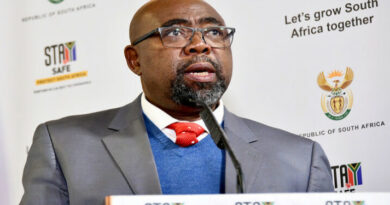Job creation through art
Picture it – the studio of a world-renowned artist, possibly supported by a team doing anything from running the social media platforms to arranging exhibitions, ordering art supplies, taking calls, drawing up invitation lists and keeping the coffee percolating, perhaps with a few as-yet-unknown artists renting space in a quiet corner. That world-renowned artist had to start somewhere.
Investment bank JP Morgan recognises the value and potential of art, and recently unveiled an exhibition of artworks by 20 emerging and mid-career South African artists.
Read: SA’s blue-chip art
The works were completed as part of the inaugural Abadali Art Development Programme, launched last year. The programme was designed to provide artists from disadvantaged backgrounds with the financial skills necessary to achieve financial stability, and the business development skills necessary to access the broader South African art market.
JP Morgan teamed up with the Arts and Culture Trust (ACT) – a partnership between the private sector, government and the local art community – to develop and execute the programme.
The aim is to highlight South African artists from communities that might not traditionally be known for their art, says Ronelle Reddy, JP Morgan vice president for investment banking finance and business management in sub-Saharan Africa.
“Marginalised communities tend to be overlooked when it comes to the arts, but we have seen that they produce great talent. We view these artists as important cultural contributors and see the programme as an investment in the future of South African art and job creation.”
As Mark Roe, head curator of the parent company JPMorgan Chase Art Collection – one of the oldest and most extensive corporate art collections in the world (it was started by David Rockefeller in 1959) – says:
“In order to sustain themselves as formal career artists, artists have to be entrepreneurial.”
JP Morgan invested financially in the Abadali programme, while also providing financial and entrepreneurial training, skills development workshops, mentorship and a monthly stipend for each participating artist. In return, the artists undertook to produce at least two artworks during the period.
The artists were selected from 183 applicants. Of the 20, half are relatively new artists who have had limited exposure so far, while the others have spent at least five years creating art and have already held solo exhibitions of their work.
Rolihlahla Mhlanga, a mentor from ACT, says the programme teaches artists how to access and build the networks necessary to kick-start a formal artistic career.
“A career artist is someone who has administrative knowledge, who understands their value proposition and who knows how to engage and knows who they want to engage with to sell their product,” he says. “The programme extends from basic things like knowing how to set up a bank account and how to invoice, to knowing who to sell your art to.”
An array of players is involved in the art industry – from private collectors and museums to art dealers and galleries. Giving the artist the skills to communicate without being intimidated by the corporate environment and understanding different vetting processes and policies to pursue clientele within the space is the crux of the mentorship programme offered by ACT.
Faatimah Mohamed-Luke, a Cape Town-based artist who uses locally manufactured building blocks or Lego to create her pieces, says supporting local artists feeds into the value chain for job creation and empowerment in the art world.
She told Moneyweb that she turned her art into a full-time business over time. Her challenge is that art is hardly accessible; she would like it to become more mainstream.
“I think art just needs to be more accessible in terms of everybody being able to view it, even [in terms of] locations where you find art – it’s always in galleries or museums, where not everyone is able to access it or go once a week,” she says.
Art created by participants in the inaugural Abadali Art Development Programme
Source: All images courtesy of the Abadali Art Development Programme
Another participant, Mbali Dhlamini, who works across multi-disciplines from her Johannesburg studio, says there are many streams for artists to operate in and that incubating the artist helps them navigate the different streams so their career does not stay limited to one trajectory.
The JPMorgan Chase Art Collection comprises more than 30 000 pieces, which are displayed in the bank’s 450 offices around the world.
Some 92 pieces acquired by JP Morgan from the Abadali programme are being added to the collection. They are currently being exhibited at the company’s Johannesburg and Cape Town offices and will later be displayed in the parent company’s offices abroad.
Source: moneyweb.co.za


